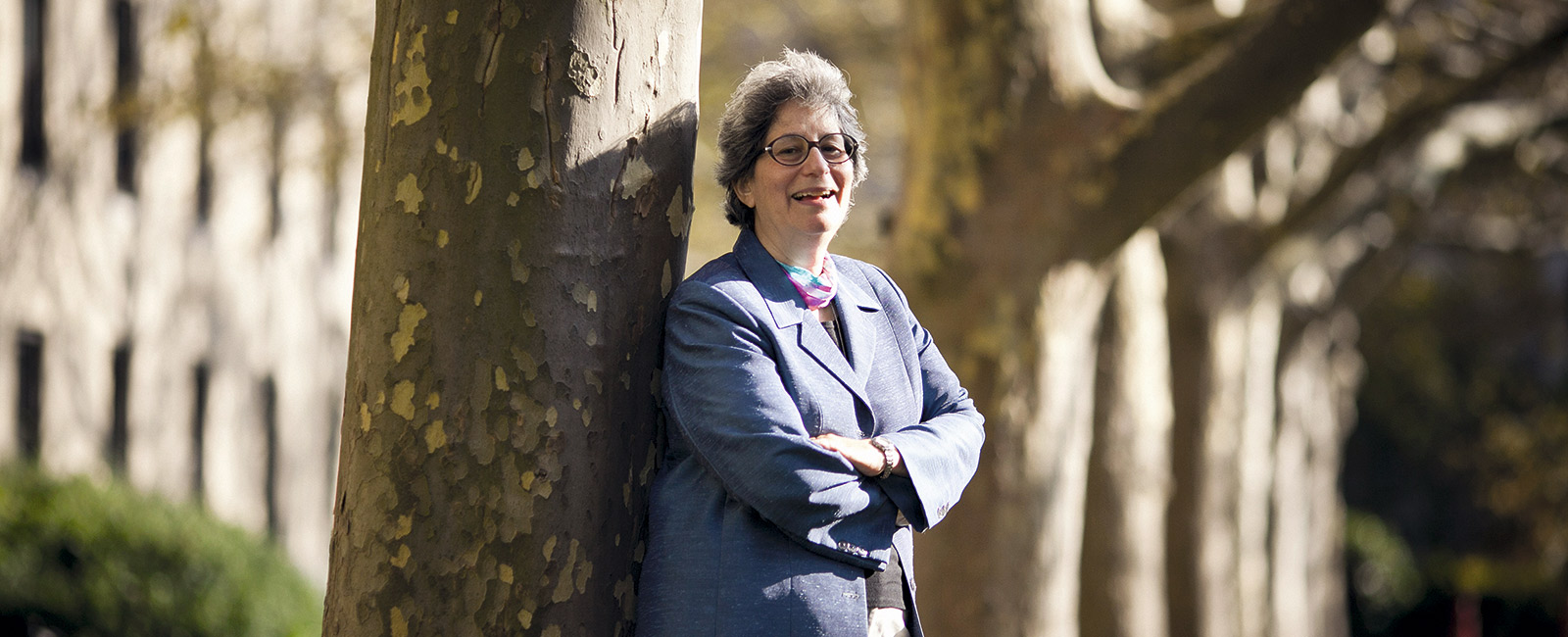Susan Solomon wins the BBVA Foundation Frontiers of Knowledge Award for establishing the links between atmosphere, climate and human activity
The BBVA Foundation Frontiers of Knowledge Award in the Climate Change category goes in this fifth edition to U.S. scientist Susan Solomon for her work on determining how human action alters the composition of the atmosphere and how these changes, in turn, affect the Earth’s climate. The jury’s citation states that Solomon “has contributed, through her research and leadership, to the safeguarding of our planet.”
10 January, 2013
Solomon’s work over 30 years has succeeded in establishing and drawing together links between three key climate change variables: human activity; a profound and comprehensive understanding of the behavior of atmospheric gases; and the alteration of climate patterns globally.
Susan Solomon is a professor at the Massachusetts Institute of Technology (MIT). For the jury, “her early research, fundamental to the understanding of stratospheric chemistry, led to the strengthening of the Montreal Protocol to curb the use of ozone-destroying substances.” In recent years, the citation adds, “her contributions and leadership within the IPCC and other forums is a role model of science for the public good.”
Carlos Duarte, the jury secretary and Director of the UWA Oceans Institute at The University of Western Australia, added during the announcement event that Solomon “has formulated a general theory of climate system response to perturbations in atmospheric composition.”
Solomon received news of the award last night and declared herself “thrilled. It is a fantastic award and also a great honor to join these very
distinguished past recipients.”
A precocious scientist and a vital discovery
Susan Solomon (Chicago, 1956) was won over to science at an early age by watching TV nature programs like The Undersea World of Jacques Cousteau. Her passion for atmospheric chemistry was already apparent in high school, where she won a prize with a project measuring the amount of oxygen in gas mixtures.
After earning her PhD from the University of California at Berkeley, with an atmospheric chemistry project alongside future Nobel laureate Paul Crutzen, Solomon started work in the NOAA (National Oceanic and Atmospheric Administration). It was the early 1980s, and news was coming in of a drastic reduction in the ozone layer over Antarctica. Although the ozone-destroying power of the gases known as CFCs – chlorofluorocarbons, used in refrigeration and aerosols – was already known to science, the hunt was still on to find the causes of the hole opening up in the Antarctic ozone layer.
Why in Antarctica, so far from where CFCs were in regular use? And, why was depletion happening so fast? Susan Solomon solved the mystery by elucidating the chemical reactions that take place on the surface of the ice crystals present in the stratosphere over both poles. But not content with constructing an explanatory model, she was determined to test her theory on the ground. In 1986 and 1987, Solomon led two expeditions during the Antarctic winter – with its permanent nights and temperatures as low as 50ºC below zero – to gather data on atmospheric composition at the time and place when the hole was forming. The evidence obtained would vindicate her theory.
Science had already established that a lack of ozone led to an increase in the ultraviolet radiation reaching Earth, but it was Solomon who proved, in later research, that these changes in stratospheric composition also impacted on climate. In particular, the ozone hole has a clear effect on wind and rain patterns in the southern hemisphere.
This was the first time a link had been found between the ozone hole and climate. As Solomon explains: “the ozone hole is such an incredible perturbation of the entire atmosphere, it just rocks the planet.”
Her research has produced such tangible results as the ban on CFC gases in the Montreal Protocol, signed in 1987. “What’s encouraging about the ozone hole is that it shows that people can understand that we can change our global environment in ways that are not safe, but we can also make choices to decide that we don’t want to do that. And is it not amazing,” she goes on, “that virtually every country in the world has signed the Montreal Protocol?”
Another of Solomon’s findings highlights the slowness with which the atmosphere recovers. Despite this, she insists that “it is important to know that it’s not too late to stop turning up the thermostat.”
In 2002, she joined the Intergovernmental Panel on Climate Change (IPCC), where she co-chaired Group One, tasked with writing the watershed climate report published in 2007.
International jury
The jury in this category was chaired by Bjorn Stevens, Director of the Max Planck Institute for Meteorology (Germany). The secretary was Carlos Duarte, Research Professor of the Spanish National Research Council (CSIC) and Director of the UWA Oceans Institute at The University of Western Australia (Australia). Remaining members were Miquel Canals, Professor of Marine Geology in the Geology School at the University of Barcelona; Sandrine Bony-Lena, senior scientist in the Laboratoire de Meteorologie Dynamique belonging to the Centre National de la Recherche Scientifique (CNRS) and Pierre et Marie Curie University (France); Kirsten Halsnæs, Head of the Climate Program at the Technical University of Denmark (Denmark), and Edward Rubin, Professor of Engineering and Public Policy at Carnegie Mellon University (United States).


